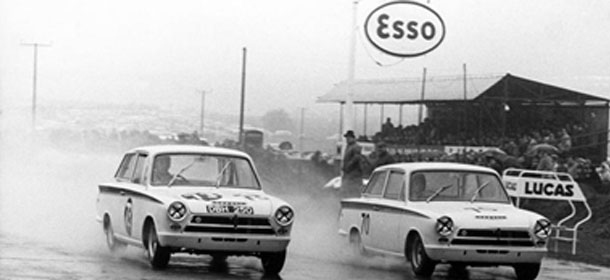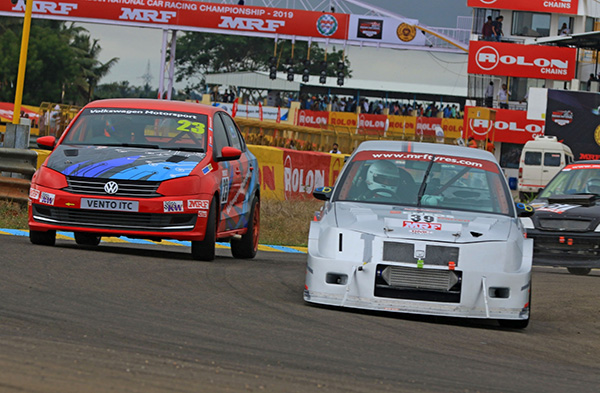
Among all the products that we offer here at Race Concepts, we seem to get the highest number of questions about coilover suspension systems. The first and most frequently asked question is always about ride height. Then it goes to ride comfort, stability at higher speeds and so on. So, we thought we’d write a quick blog about suspension systems to address, and hopefully answer these questions.
The alternatives are make-shift solutions

It is crucial to understand that stance is not everything. Handling is also an important parameter, and when ignored, it can be upsetting and dangerous.
Let’s set the record straight right now. A lowered ride height is a bi-product of a quality suspension system, and not the primary purpose of it. Typically, to lower the ride height, car owners change the springs on their stock suspension system, but hang on to the same damper. This results in a suspension setup that is highly prone to failure, simply because that sort of spring-damper pairing simply isn’t designed to work together. Stock dampers are designed to only travel within a certain range. Lowering it beyond its working stroke will make the damper bottom out easily, thus resulting in an unpleasant ride.
So essentially, this method of lowering the ride height leads to poor ride quality, reduced damper life and also poor damper control. In other words, the suspension maintains a lower ride height, but fails to do its actual job.
Better ride comfort

To get an adequately lowered ride height as well as much better handling, the most popular solution the world over is to install a ‘coil over shock absorber’ type of system or, coilovers for short. A coilover suspension system consists of a heavy duty spring coiled over an equally robust damper. In this case, the spring and damper are designed in tandem, to work with each other and offer the best ride comfort as well as a lowered ride height. Since the working length of the damper is meant to work with a lowered ride height, it does not compromise on overall suspension performance.
However, the benefits of having a coilover suspension doesn’t just end at the ride height. You will notice an instant improvement in the handling and ride quality of the car. Typically, the car feels a lot more planted and gives you the ability to make razor sharp movements, even at higher speeds. Since the suspension is completely tuneable, you can find the perfect balance of firm and soft feel in the same car.
What’s more? Unlike OEM dampers which are usually built to cost, coilovers are made with highly durable materials, making them heavy-duty too. Not only are they incredibly durable, the dampers are no longer use-and-throw: they can be serviced. So even if the initial expense of installing a new set of coilovers on your car is relatively high, the cost of running the car is significantly lower.
Much higher customizability

To paraphrase, the whole point of having a suspension is to get the tyres to be in contact with the ground as much as possible, because your car can only do the amazing things that it’s capable of when the tyres are in contact with the surface. So, before you even think about what type of coilover system you want to install in your car, figure out what kind of driving you will be doing. Are you a city slicker, highway cruiser or occasional trackday junkie?
These are the sort of questions that will inform your choice. The customizability that coilover suspension systems offer can get overwhelming. There are multiple areas of improving your handling such as:
- Camber adjustment to give better footprint to the tyres under acceleration and cornering.
- Independent ride height control to get the perfect stance and lower centre of gravity. This leads to improved overall dynamics and reduced overall drag.
- Independent Preload Adjustment to increase or decrease spring stiffness to suit the application.
- Rebound Adjustment to set the precise damper setting to get spot on stiffness as desired.
- All new top mounts and anchor mounts for most applications with bearing mounts to remove the sloppiness of aged suspension components and giving firmer steering response with low top mount friction.
- Lighter construction, resulting is lower unsprung mass and lesser wear on steering components.
- With reduced overall suspension travel, steering and chassis components have lower rate of wear and tear, especially with regard to stabilizer link rod, tie rod ends, ball joint and lower arm ends.
These are the inherent benefits of a coilover suspension system versus any other solution
Another factor to consider for city sleepers is progressive rate springs in the coilover. A progressive rate spring is basically a spring whose spring rate is variable through the length of the damper. Such springs are much more streetable because they contribute significantly to the roll control of the vehicle, giving you much better handling on tighter city roads. Further improving overall braking stability and reducing braking distance too. So in other words, makes your car safer overall.

To sum up, it is definitely an attractive proposition to lower your car by just changing the springs on your stock suspension. However, it is a much wiser and cost-effective decision in the long run, to invest in a coilover suspension system that is designed for both lower ride heights and higher ride control.
The coilovers that we use here at Race Concepts are a result of over a decade’s worth of R&D on the race track. Fill in our enquiry form and get a quote for your car.







